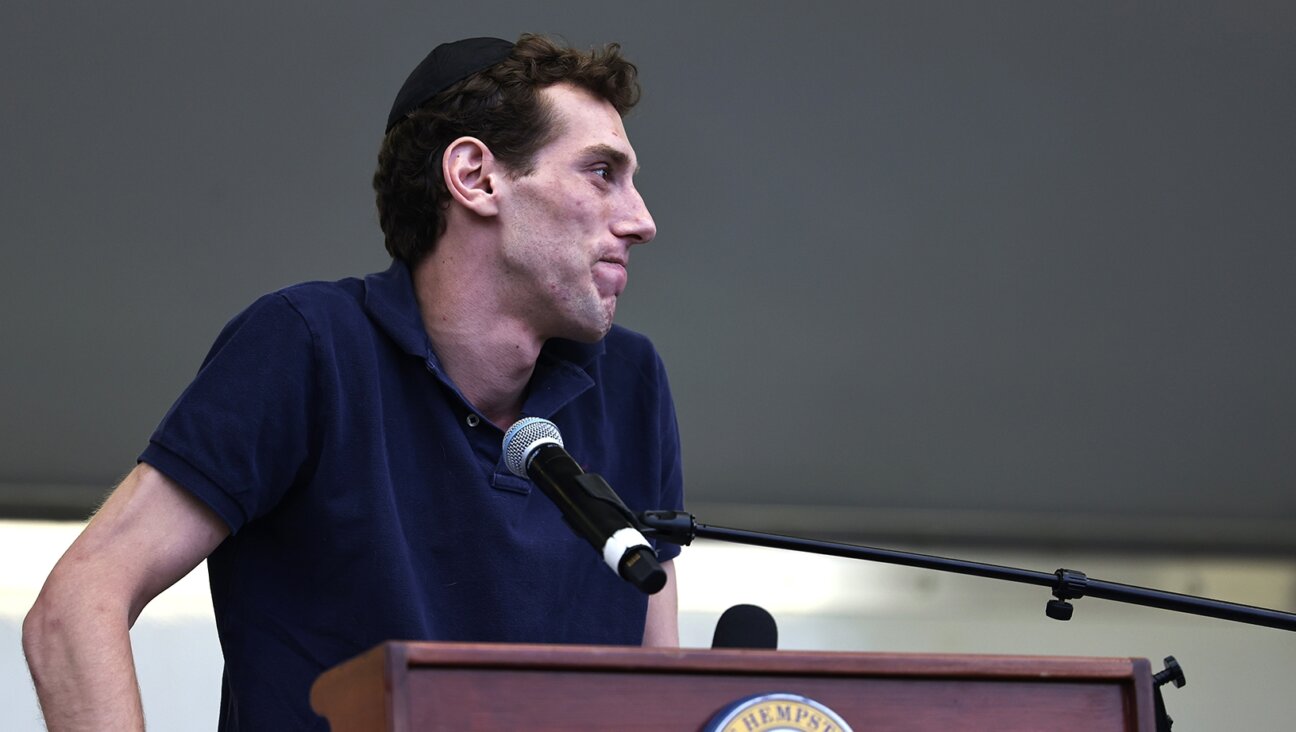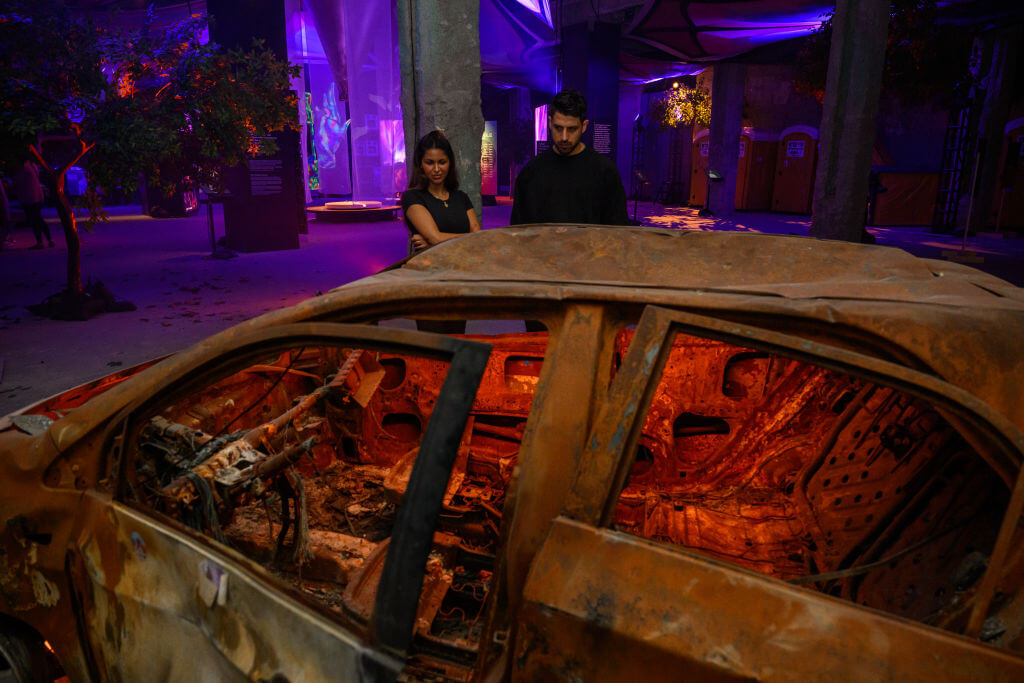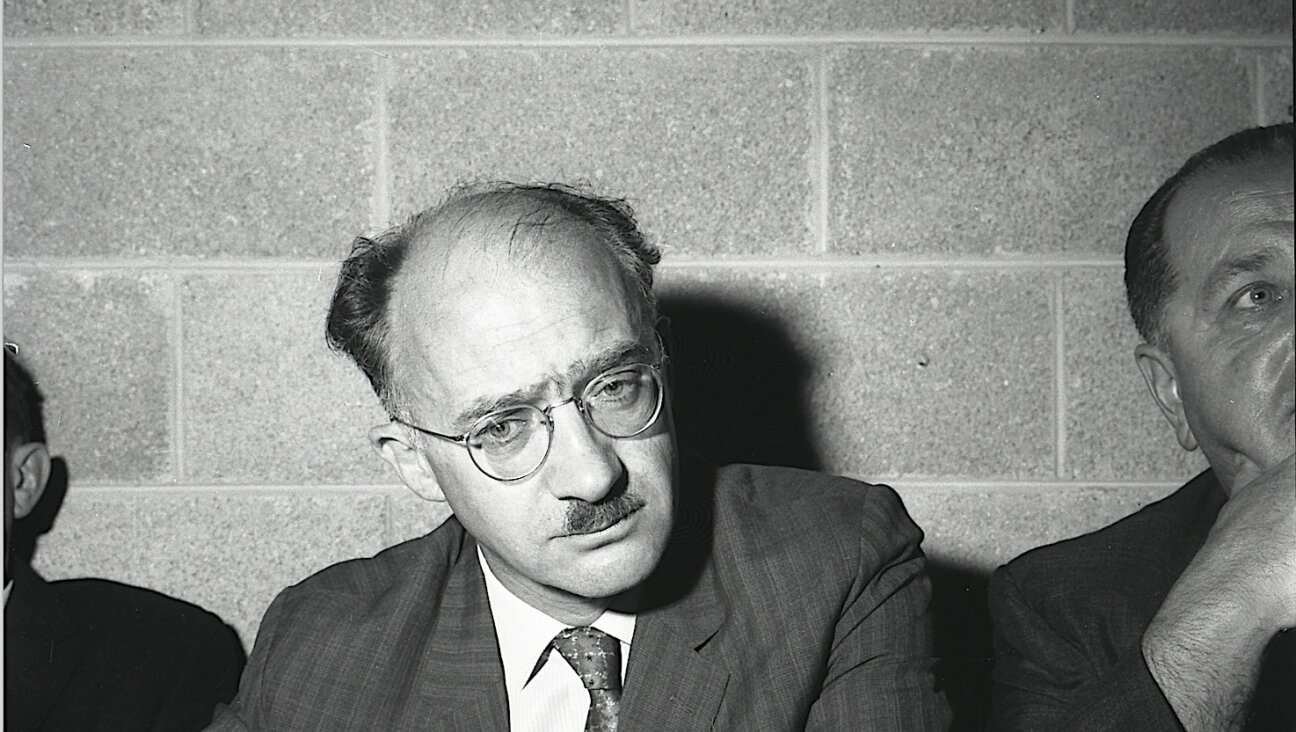Brooklyn Hasidim Lost A Vote — Which Might Save Their Children From A Life Of Poverty

Graphic by Angelie Zaslavsky
In a last-minute backroom deal in April of 2018, a New York State Senator managed to dramatically reduce the ability of the government to enforce educational standards at Jewish day schools.
Senator Simcha Felder, an Orthodox Jew who ran as a Democrat but caucuses with the Republicans, represents large swaths of the Hasidic community in the Boro Park, Midwood and Flatbush neighborhoods of Brooklyn. In April, Felder was a key swing vote with the power to block the state budget if he didn’t get his way.
But in the November 2018 election, Democrats took back control of the New York State Senate — and with it, a large chunk of Felder’s power.
Brooklyn, New York is home to approximately 50,000 Hasidic yeshiva students. Until recently, the yeshivot that educate these students have set their curriculum without much interference from the government, media or the general public.
What was taught in these yeshivas was of no concern to those outside the Hasidic community. This started to change in 2011, when former Hasidic yeshiva student Naftuli Moster founded Young Advocates for Fair Education and began pressing state and local authorities to enforce educational standards. In 2015, New York City officials agreed to begin looking into the issue, and that same year, YAFFED filed a class-action lawsuit against four yeshivot. In the years since, Moster and his allies have been an increasingly public thorn in the side of the Hasidic Brooklyn establishment.
As the city’s investigation continued to pick up steam, Hasidic leaders devised a plan to safeguard the status quo.
The plan was brazen by any stretch of the imagination. The Satmar Rebbe Rabbi Aaron Teitelbaum urged State Senator Simcha Felder to hold up the New York State budget until they agreed to pass an amendment which would exempt Hasidic yeshivot from the full-curriculum of secular studies as mandated by law.
The chamber was evenly split down party lines, and Simcha Felder knew how to use his power. Time and again, he was courted by both parties. Felder made his vote count, especially when it came to protecting the status quo of Hasidic yeshiva education.
Felder followed orders and eventually pushed through the budget and his “yeshiva carve out” amendment.
Felder himself is not Hasidic. His children do not attend Hasidic yeshivot. Nevertheless, Felder felt obligated to take orders from the Satmar Rebbe, whose followers generally vote for whomever he tells them to vote for.

A young man walks by a school bus for a Hasidic yeshiva in Brooklyn. Image by Getty Images
Governor Cuomo warned Felder months ago that the midterms would most likely result in a Democratic majority. “Let me say that the Democratic conference will not need you in November the way they need you now,” Cuomo reminded Felder, and urged him to rejoin the party while his vote still counted.
Felder ignored Cuomo’s advice. Now, with Felder weakened, his “Yeshiva carve out” amendment might be in jeopardy of being repealed or undermined.
Without the Felder amendment, Hasidic yeshivot would theoretically be subjected to the same state and city education laws that apply to all private schools. Not teaching secular studies as mandated by law would no longer be acceptable.
The Felder amendment aimed to deal with the “substantially equivalent” clause in the New York State education law, which mandated all private schools teach their students a substantially equivalent curriculum as taught in public schools.
The amendment sought to consider the Talmud taught in Hasidic yeshivot as a substitute for the secular subjects not taught to the yeshiva students. The amendment also wanted to permanently exempt Hasidic yeshivot from teaching any secular subjects past the 8th grade. Naturally, Albany was wary of passing such an amendment, as it would only further erode the little secular studies that Hasidic yeshiva students received already.
“Even if we had to do something for Simcha, we could have minimized the damage to kids with narrowed language,” said Assemblywoman Catherine Nolan, who chairs the New York State Assembly education committee.
Exactly how the amendment is to be understood and implemented is a matter of ongoing debate.

A Hasidic yeshiva in Brooklyn, New York. Image by Getty Images
In practice, Hasidic education consists almost exclusively of religious studies such as Torah, Mishnah, Talmud and Jewish law. The little English grammar and basic math that is taught comes after a long day of religious training.
From my own experience studying in Hasidic yeshivot and from my time teaching basic English in the Satmar yeshiva, I can attest that by the time students sit down for the regular 90 minutes of secular education, they are usually tired and restless. Most Hasidic boys do not receive a high school diploma. With only rudimentary secular training until 8th grade and no secular studies after 8th grade, Hasidic boys do not have the skills to even take the New York State high school Regents.
This is not accidental. The Hasidic yeshivot don’t want their graduates to attend college and they see no reason why their students should receive a high school diploma. So long as their students are adept at Talmudic study and Jewish law, the yeshivot feel that they have accomplished their mission.
This has not always been the case. In the early days of Hasidim in America, Hasidim were more open to secular studies for their sons. Most Hasidic yeshivot from the 1940s through the 1970’s taught their students a dual curriculum, with Torah in the morning and secular studies in the afternoon. But with time, the Hasidic community reverted back to the education model they had in Eastern Europe prior to the Holocaust.
The Bobov Hasidic community illustrates this shift well.
One of the first comprehensive studies of Hasidic education in the United States was written by Robert Mark Kamen, entitled Growing Up Hasidic: Education and Socialization in the Bobover Hasidic Community. The book explores the Bobov school system, primarily dealing with the boys yeshiva grades 1-12. The study is based on Kamen’s field work and school visits during the 1974 school year.
At that time, following eighth grade, each boy had a choice of whether to continue studying secular subjects. If he chose to discontinue secular subjects when starting ninth grade, he had to obtain permission from both parents. Kamen reports that obtaining permission from the father was much easier than from the mother. Perhaps mothers were hesitant to allow their sons to stop learning secular subjects, as this would preclude them from receiving a high school diploma. But after a few requests, the mothers would eventually sign the permission slips.
From then on, the yeshiva boy would learn exclusively Torah for the rest of his formal yeshiva schooling. Kamen reports that in 1974, very few Bobov yeshiva boys received a New York State high school diploma. As time went on, it seems the school policy changed. Written permission from the parents was no longer required to discontinue formal secular education. By default, from ninth grade on, the yeshiva provided only Torah instruction.
Most Hasidic yeshivot eventually followed the Bobov model. Secular subjects, usually consisting of basic English and math, stopped entirely after eighth grade. Furthermore, not every Hasidic boy was obligated to attend secular subjects even until eighth grade. Children or grandchildren of Hasidic rebbes, known as “Rebeshe einiklach,” were exempt from secular subjects altogether.
The history of the Chabad-Lubavitch Hasidic sect in America illustrates this conflict. Initially, when the sixth Chabad Rebbe arrived in 1940, he established the yeshiva Tomchei Tmimim, which utilized a dual curriculum: Torah in the morning followed by secular studies in the afternoon. However, in 1956, the seventh Chabad Rebbe established his own rival yeshiva, Oholei Torah, dedicated to a pure Torah education without any secular instruction at all.
Naturally, it was the graduates of Oholei Torah who most often eventually went on to heed the Rebbe’s call to establish Chabad houses around the globe. Today, the Oholei Torah yeshiva is the flagship school of the Chabad movement in Crown Heights, boasting 1,850 students from kindergarten to the adult full-time beit midrash.
For many years, Yiddish was the sole language of instruction in Oholei Torah, but lately English is becoming more prevalent as the student body speaks Yiddish at home less and less.
Without a high school diploma and no college credits to speak of, most Hasidic yeshiva graduates either studied full-time in kollel, worked inside the community as Torah teachers or joined local stores that were owned by Hasidim. The secular workplace was generally off limits.
With time, a number of Hasidic yeshiva graduates wanted to open up more job opportunities for themselves. Contrary to their community’s wishes and norms, they received GEDs and enrolled in college. Only then did they realize how behind they were in secular studies. YAFFED was founded by one such yeshiva graduate. Moster immediately realized the disservice Hasidic yeshivot were doing to their students and began advocating for yeshiva education reform.
With the passing of the Felder Amendment, YAFFED filed suit in Federal Court challenging the amendment’s constitutionality.

Members of an Orthodox Jewish community in Williamsburg, Brooklyn walk through the neighborhood. Image by Getty Images
The future of secular education in American Hasidic yeshivot remains to be seen, but one thing is certain: Felder’s reign as kingmaker is over.
Now that Felder cannot make demands anymore, it would seem probable that the chamber’s education committee may decide to revisit his amendment. There is no question that the amendment was aimed to water down education standards in Hasidic yeshivot. Instead of bolstering yeshiva student’s knowledge of English, math and science, the amendment let the yeshivot continue producing graduates who are semi-literate at best.
In the meantime, YAFFED’s Federal suit grinds on.
In a recent affidavit filed in Federal Court, and in a shorter op-ed in Crain’s, former Hofstra Law School Dean and current Brooklyn Law School professor Aaron D. Twerski asserts that the current Hasidic education curriculum is in the best interest of the community. After discussing the intrinsic value of Talmud study, primarily its ability to sharpen the student’s mind, Twerski makes the following statement: “Critics of Hasidim like to note that there is poverty in our community. But it is simplistic and inaccurate to suggest that the emphasis on Jewish studies is at the root of those financial challenges. It is common for husband and wife to earn between $75,000 and $100,000 annually yet struggle because large families are common. That is a choice made of religious conviction, not the product of inadequate education.”
This statement makes unsubstantiated assertions. According to the most recent UJA Special Report on Poverty, 45% of Hasidic households in New York live in poverty. The study goes on to connect the low earning capacity in the Hasidic community to the lack of secular education. The study concludes that despite considerable effort, the families cannot earn enough money to be self-supporting.
“Nearly three-quarters of poor Hasidic households have at least one person who is employed full-time or is self-employed. But Hasidic households have very low levels of secular education. In 62% of Hasidic households, neither the respondent nor his or her spouse has more than a high school diploma.”
It is regrettable that Professor Twerski, who personally acquired a solid secular education which enabled him to reach the height of American academia, should be defending the Felder Amendment, which will only further erode the opportunity for Hasidic boys to obtain a secular education.
The Hasidic communities’ refusal to teach boys secular subjects seems to be based on the theory that the boys will use secular knowledge and training to leave the Hasidic way of life. At times, this fear of male defection becomes a self-fulfilling prophecy.
The days of living in the shtetl are long gone, even if many are trying very hard to pretend otherwise. The challenge is immense. They fear that exposing their children to secular disciplines such as English, math, science, history and geography will inevitably lead to the weakening of the Hasidic faith. However, the success of the numerous non-Hasidic yeshivot in the United States in teaching their students a full secular curriculum while still maintaining a religious Orthodox lifestyle proves that secular learning and religious observance are not a contradiction.
Only time will tell how this latest educational battle will end.

















